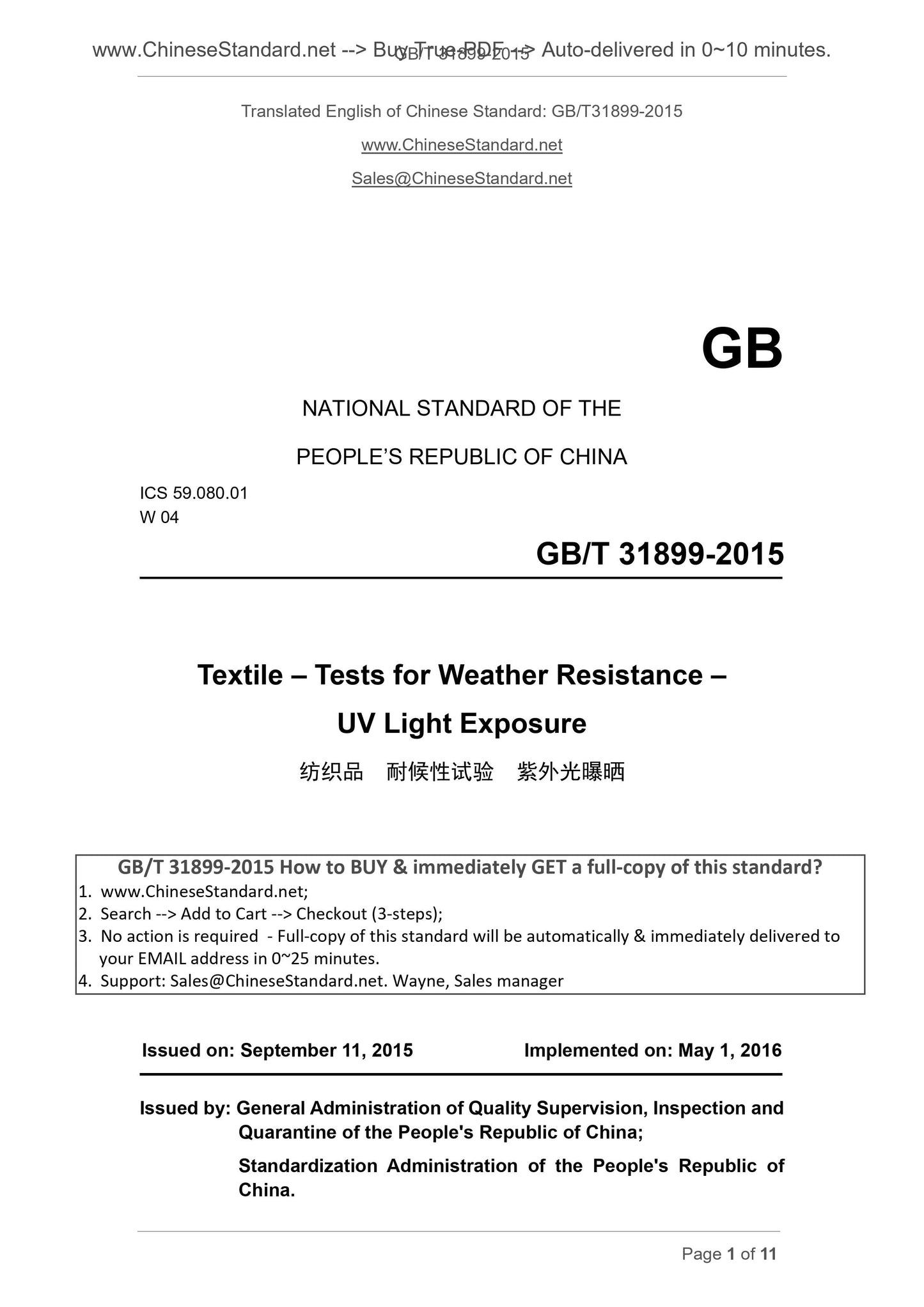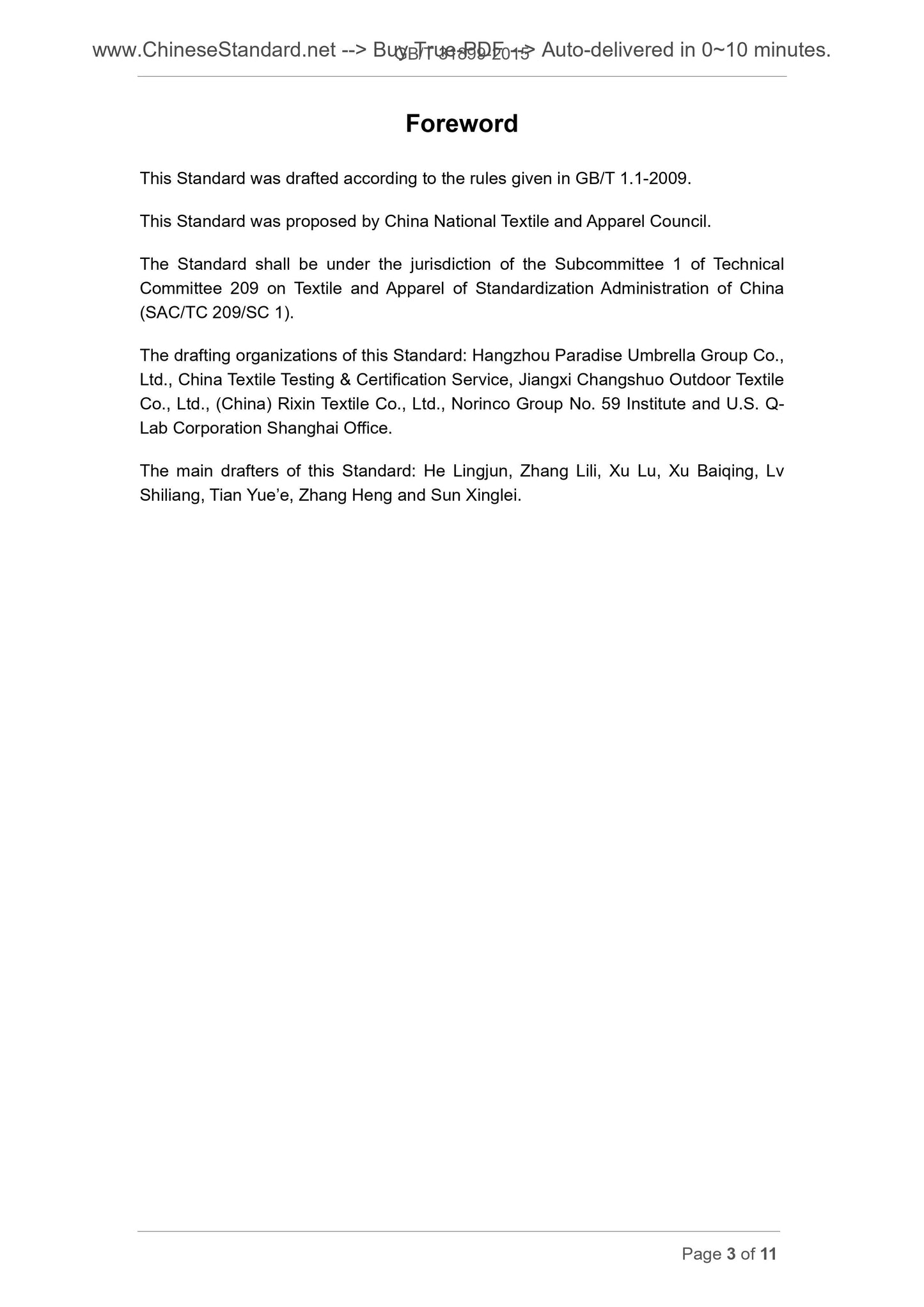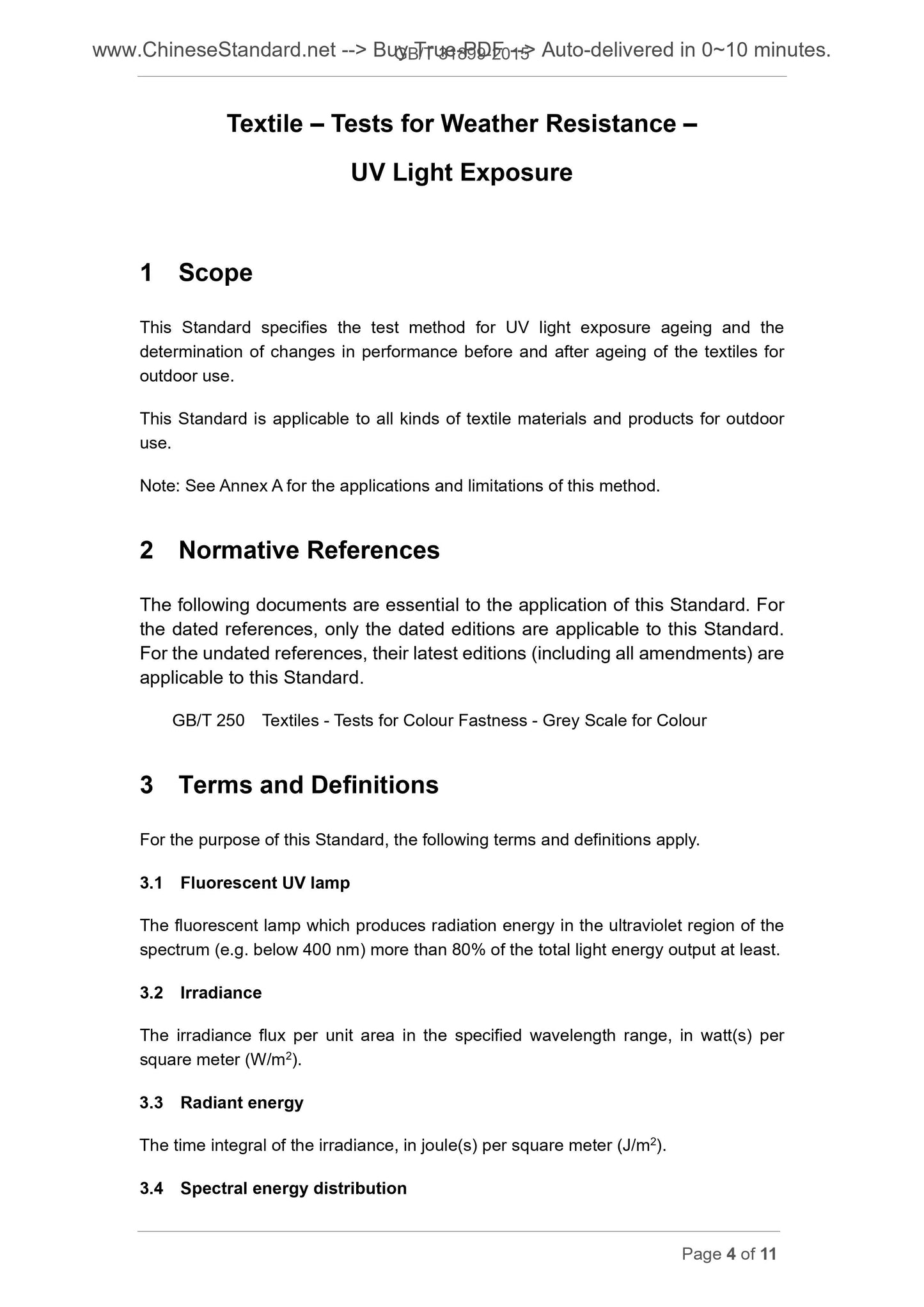1
/
of
5
www.ChineseStandard.us -- Field Test Asia Pte. Ltd.
GB/T 31899-2015 English PDF (GB/T31899-2015)
GB/T 31899-2015 English PDF (GB/T31899-2015)
Regular price
$110.00
Regular price
Sale price
$110.00
Unit price
/
per
Shipping calculated at checkout.
Couldn't load pickup availability
GB/T 31899-2015: Textile - Tests for Weather Resistance - UV Light Exposure
Delivery: 9 seconds. Download (and Email) true-PDF + Invoice.Get Quotation: Click GB/T 31899-2015 (Self-service in 1-minute)
Newer / historical versions: GB/T 31899-2015
Preview True-PDF
Scope
This Standard specifies the test method for UV light exposure ageing and thedetermination of changes in performance before and after ageing of the textiles for
outdoor use.
This Standard is applicable to all kinds of textile materials and products for outdoor
use.
Note. See Annex A for the applications and limitations of this method.
Basic Data
| Standard ID | GB/T 31899-2015 (GB/T31899-2015) |
| Description (Translated English) | Textile - Tests for Weather Resistance - UV Light Exposure |
| Sector / Industry | National Standard (Recommended) |
| Classification of Chinese Standard | W04 |
| Classification of International Standard | 59.080.01 |
| Word Count Estimation | 11,168 |
| Date of Issue | 2015-09-11 |
| Date of Implementation | 2016-04-01 |
| Regulation (derived from) | National Standard Announcement 2015 No.25 |
| Issuing agency(ies) | General Administration of Quality Supervision, Inspection and Quarantine of the People's Republic of China, Standardization Administration of the People's Republic of China |
Share









